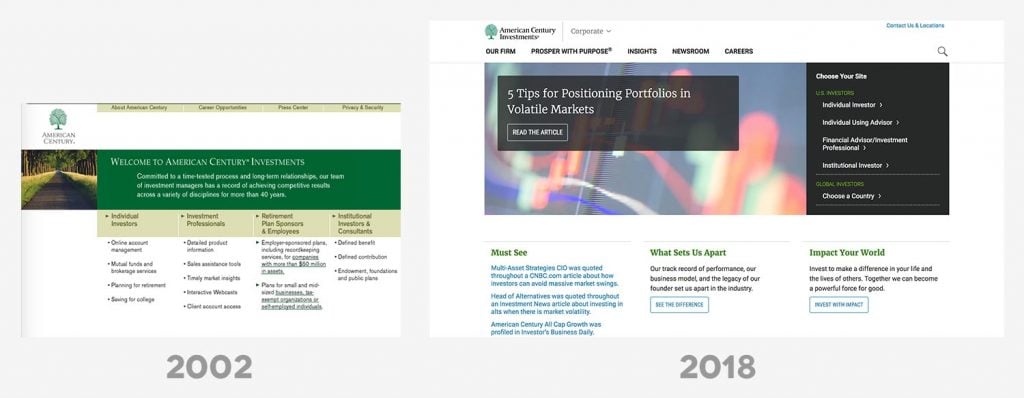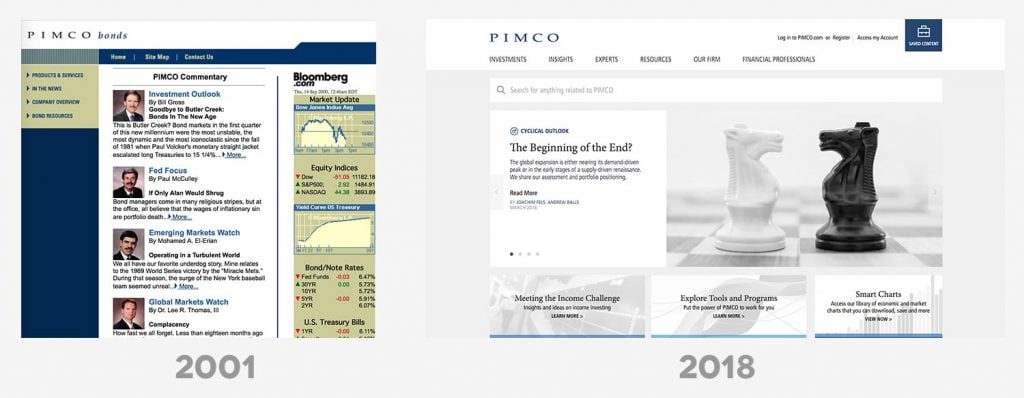It’s now been 28 years since computer scientist Tim Berners-Lee invented the World Wide Web back in 1990. Not many people will remember browsing the internet much until later that decade, when many companies created the first incarnation of their website. So much has happened to the internet since then, here’s a few milestones:
- 1994 – First ever e-commerce transaction
- 1995 – Amazon launches website to sell books online
- 1997 – Google launches it’s search engine
- 2001 – Wikipedia launched
- 2004 – Facebook created
- 2005 – YouTube launched
- 2006 – Twitter launched
- 2007 – First iPhone launched
- 2008 – Chrome browser launched
- 2010 – Instagram launched
- 2014 – HTML5 was released as a W3C Recommendation (long after coders started using it)
The web geeks among us will remember that in the early days of the internet, websites were very different. Most were built in tables and many used frames. The code was ugly. CSS was not widely supported and seldom used. Internet Explorer and Netscape Navigator were the browsers of choice. A strange hosting service called GeoCities was around. Flash was widely used across websites for many years, with some websites built entirely as Flash based (here’s an amusing reminder if you’ve forgotten: www.zombo.com).
The last ten years or so has seen companies completely revamp their online presence multiple times (study: average age of a website is 2.7 years), with most moving to a fully responsive site that displays nicely across the myriad of devices that we’re all using. In the financial services industry the wheels were turning slower than most, and many major brands took a beating from consumers for being digital laggards. But things change…and have changed, dramatically.
Regular Kurtosys readers will know that we regularly check up on asset manager websites and even feature our favourite designs in our ‘50 best gallery’. Most of the top 100 asset managers (by AUM) now have invested heavily in their digital footprint and their websites contain features we all expect, such as: personalisation, multi-language, mobile responsiveness, content-driven, interactive data and so on.
So… it’s nice to look back at how far we’ve come. Using the power of the WayBack Machine, we’ve gone back in time and looked at a handful of asset manager websites to compare with what they look like now.
American Century

The American Century site from 2002 looks pretty respectable all things considered. Back then it was common to use images for text, as web-fonts were not supported, but all those images had an impact on loading time. 128k modem anyone?
BlackRock

Look at that purple! Tabular navigation was all the rage back in 2000. The home page did have regular content up front as well as market data, which back then was not easy to do.
BNY Mellon

Not as old as some of the examples here, but it’s still 11 years between these versions. Many sites back then were still designed for an 800×600 display as designers had to cater for the lowest common denominator.
Franklin Templeton

Pictures of people in suits with a drop shadow effect… and those colours. But let’s not forget that back then most designers worked to a web-safe palette of just 216 colours!
J.P. Morgan

One of the oldest examples we found in our selection, nearly 20 years between versions. This 1999 version looks text-heavy but maybe they had a powerful SEO strategy in mind…
Neuberger Berman

Curved corners. Many websites back then were built using frames and tables. Designers spent hours creating visual effects and trying to line up graphics to be pixel perfect. Hover-over effects for navigation menus were also very popular.
PIMCO

A site that is both content and data driven, back in 2001! Impressive when you think about it. It was also common to highlight a sitemap prominently back then.
Schroders

A 15 year gap between these Schroders sites. The 2003 version is a classic example of trying to fit everything ‘above the fold’ into a neat 800×600 window. It’s a long way from the super long scrolling pages we see now-a-days.
So…we’ve come a long way, and it’s great to remind ourselves how the internet has evolved. Some asset managers are still catching up, so when they do launch new sites the impact will be huge for their users. Just remember, that the internet never forgets!



